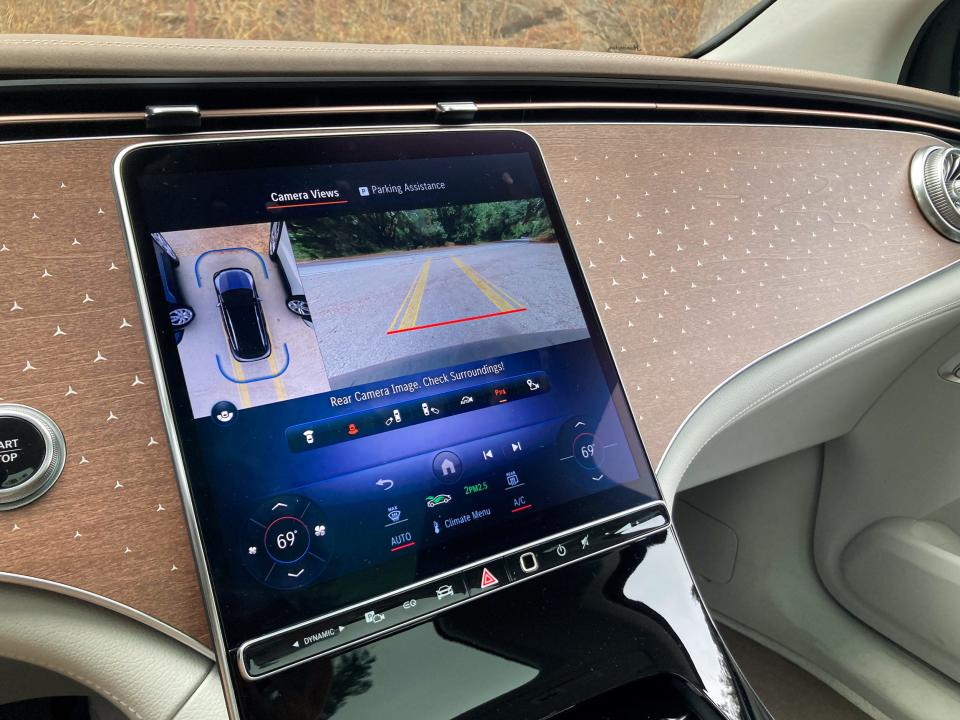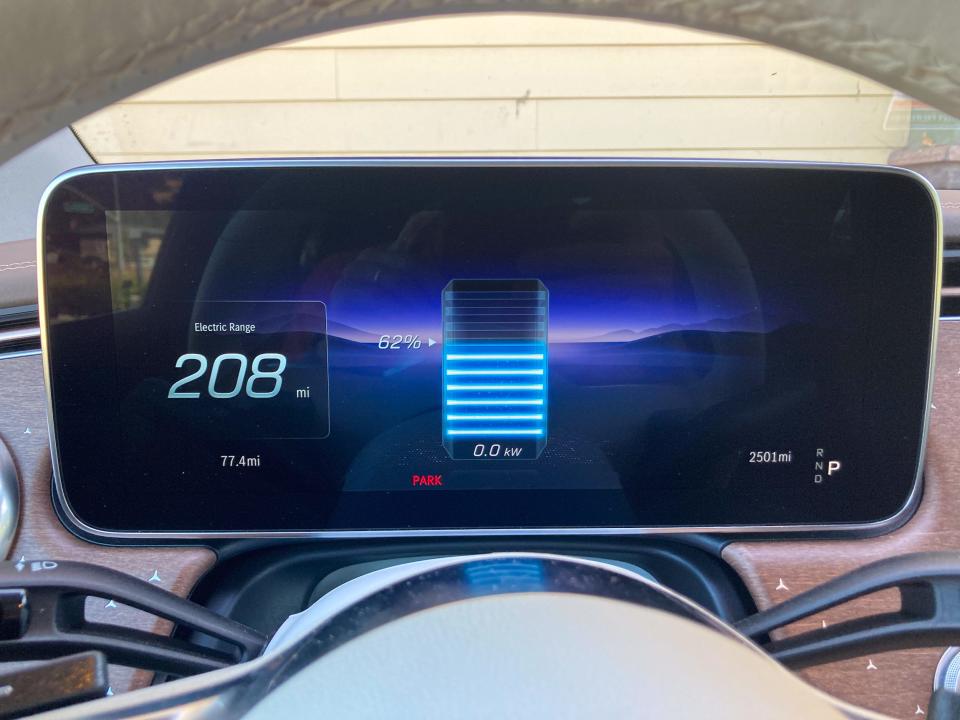I drove Mercedes' $100,000 Tesla rival and loved almost everything about it except its controversial looks. Check out the EQE SUV.

I tested the 2023 Mercedes-Benz EQE SUV, a new Tesla rival from the iconic German brand.
The EQE 500 4MATIC SUV Mercedes lent me cost around $100,000, but the model starts at $77,900.
It makes you feel fancy and offers an amazing highway-driving feature.
There's never been a better time to take the plunge and buy an electric vehicle.
While truly affordable EVs are still few and far between, the market is chock-full of luxury options. That spells bad news for Tesla, which has dominated the growing industry, and great news for EV-curious buyers who haven't been able to find what they're looking for yet.
One of the newest entrants is the 2023 Mercedes-Benz EQE SUV, a midsize family-hauler that aims right at the heart of US car buying. Check out the SUV's highlights and what I thought of it below:
Mercedes lent me an EQE SUV for a week, and I came away impressed with its swanky interior, punchy performance, and flashy technology.

I think it's a wonderful mix of old-school luxury and modern tech. But I was never fully sold on its bloated-looking styling.

Let me show you around the EQE SUV and all its most notable features.

Let's start with what matters most to many buyers: price.

The EQE SUV starts at $77,900 for an entry-level EQE 350+ model. It's the same price for rear-wheel drive or all-wheel drive.

Opting for the more powerful EQE 500 SUV pushes the starting cost up to $89,500.

The EQE 500 4MATIC SUV I tested cost $99,860 and included a bunch of optional features. (4MATIC is Mercedes speak for all-wheel drive.)

The EQE SUV receives the same round, blob-like treatment as the rest of the brand's EQ lineup of EVs.

The smooth contours help the EQE SUV slip through the air with less drag, thereby increasing driving range.

But I still prefer the sharper, more rugged look of Mercedes's gas vehicles, like the GLE, an SUV similar in size to the EQE SUV. (Plus, the GLE costs about $15,000 less than its battery-powered cousin.)

Some high points include its zig-zaggy tail lights and grille dotted with three-pointed stars.

The interior is dripping in luxury.

The brown-leather seats in my test vehicle were heated, ventilated, and nicely contrasted the white cabin.

There was leather, elegant stitching, shiny trim, and colorful ambient lighting everywhere.

Some reviewers don't like the seat controls, which don't actually move when you operate them. But I didn't mind.

My eye was constantly drawn to the gorgeous wood plank on the dash.

Like the grille up front, it was sprinkled with Mercedes-Benz logos. But you can choose a bunch of different designs.

A large glass roof and sunshade could be operated using a touch-sensitive button by the dome lights.

You swipe backward to open it and forward to close it.

The nice thing about a luxury car like this is that most of everything you touch feels high-end and well-thought-out.

Little things like the cover concealing the charging pad, the turn signals, and the air vents all operate smoothly.

Thanks to the glass roof and some clever design decisions, the EQE feels spacious inside.

Between the front seats there's a cargo shelf perfect for a small bag. The beauty of electric powertrains is carmakers have more room to play around with.

The back seats offered more than enough legroom and headroom for a large adult like myself. But the lack of rear climate controls or seat warmers was puzzling for a $100,000 vehicle. (That's optional.)

The EQE SUV isn't lacking snazzy technology either.

Its 12.8-inch touchscreen is ultra-responsive to taps, fun to play with, and easy to use.

Through it, you can view all sorts of settings and information, from the driver-assistance features to interior air quality to the SUV's fake acceleration sounds.

Here's a nice touch: Basics settings like the climate controls stay permanently on the lower portion of the screen for easy access.

The fantastic navigation system uses a clever augmented-reality overlay and the SUV's forward-facing camera to show you exactly where to turn.

The digital gauge cluster is equally crisp and graphically impressive, and it's also highly customizable.

You can decide between configurations like a full-sized map and a screen that shows off-roading info.

Almost nobody is taking this thing off-road, but it's still cool to look at.

You can also choose a minimalist mode for both screens that removes all but the most basic information.

The EQE SUV's advanced cruise-control system was a standout feature.

The SUV was able to automatically follow lane lines, modulate speed, and even change lanes with eerily human-like smoothness.

Read more: Check out BMW's radical new look for its next generation of cars
The EPA estimates range at 279 miles for the entry-level model, or 269 miles for the one I drove.

That's not bad, but also falls short of Teslas and many other modern EVs.

Fortunately, the EQE SUV can charge at a competitive rate of 170 kilowatts. But still, those range and charging figures may not satisfy people looking for the most cutting-edge EV tech.

All EVs feel quiet and smooth on the road. But the EQE SUV takes things to another level of silence and comfort.

It also provided the effortless, instantaneous acceleration EVs are known for. It's a fun party trick and also comes in handy for tight highway merges.

My tester came equipped with rear-wheel steering, which kicks in at low speeds for tight parking lot maneuvers. The result is an SUV that swerves into parking spots like a car half its size.

The verdict: If you have some extra money to spend and are looking for a high-end, high-tech EV, the EQE SUV is worth a look.

Read the original article on Business Insider

 Yahoo Autos
Yahoo Autos 